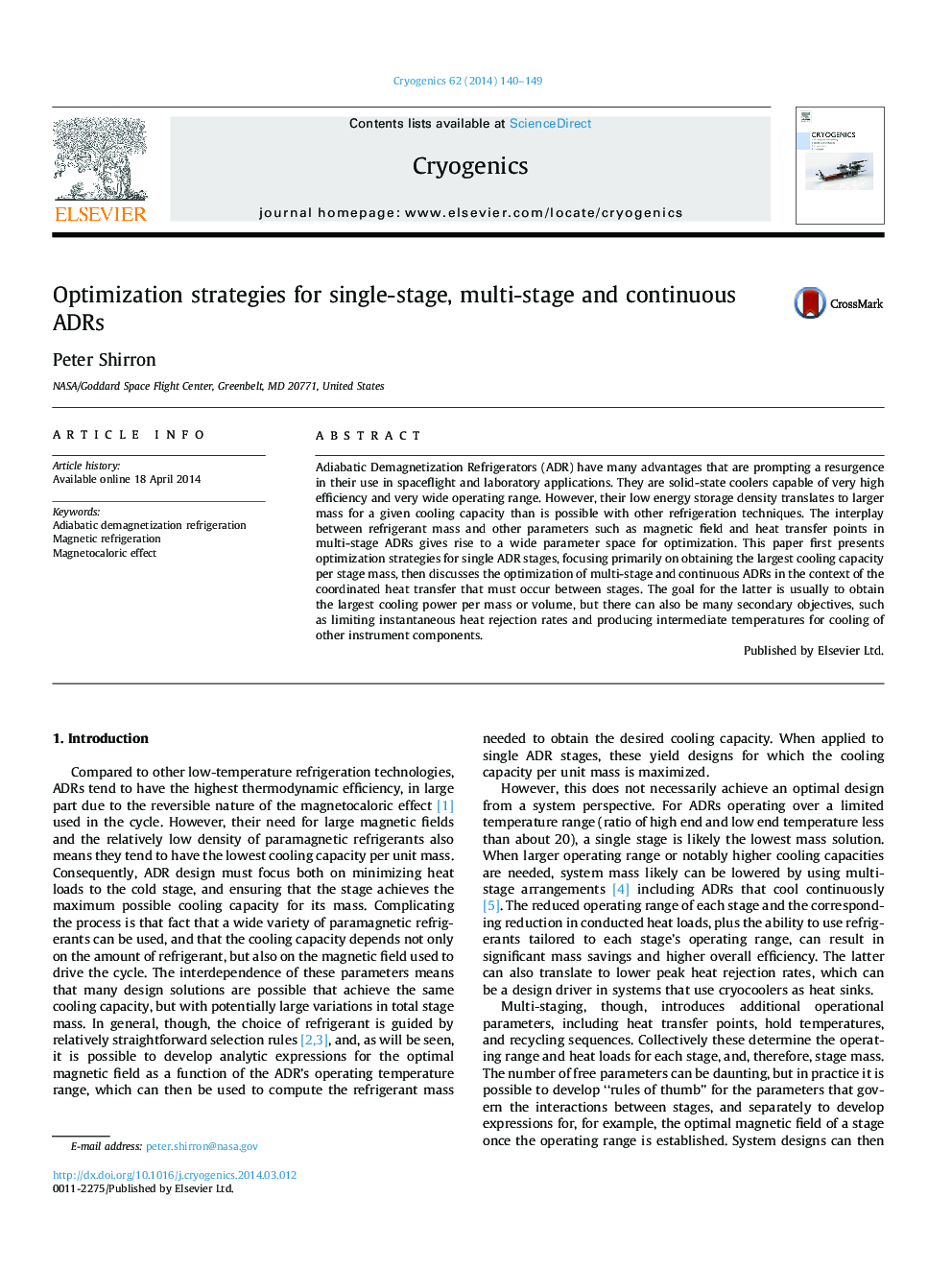| Article ID | Journal | Published Year | Pages | File Type |
|---|---|---|---|---|
| 1507440 | Cryogenics | 2014 | 10 Pages |
•Proper optimization of an ADR can significantly reduce its mass.•Refrigerant mass can be traded against magnetic field strength.•The number of stages in an ADR is an optimization parameter.•Multi-staging reduces mass by lowering the magnetic field requirements.•Optimization of continuous ADRs focuses on maximizing cycle speed.
Adiabatic Demagnetization Refrigerators (ADR) have many advantages that are prompting a resurgence in their use in spaceflight and laboratory applications. They are solid-state coolers capable of very high efficiency and very wide operating range. However, their low energy storage density translates to larger mass for a given cooling capacity than is possible with other refrigeration techniques. The interplay between refrigerant mass and other parameters such as magnetic field and heat transfer points in multi-stage ADRs gives rise to a wide parameter space for optimization. This paper first presents optimization strategies for single ADR stages, focusing primarily on obtaining the largest cooling capacity per stage mass, then discusses the optimization of multi-stage and continuous ADRs in the context of the coordinated heat transfer that must occur between stages. The goal for the latter is usually to obtain the largest cooling power per mass or volume, but there can also be many secondary objectives, such as limiting instantaneous heat rejection rates and producing intermediate temperatures for cooling of other instrument components.
